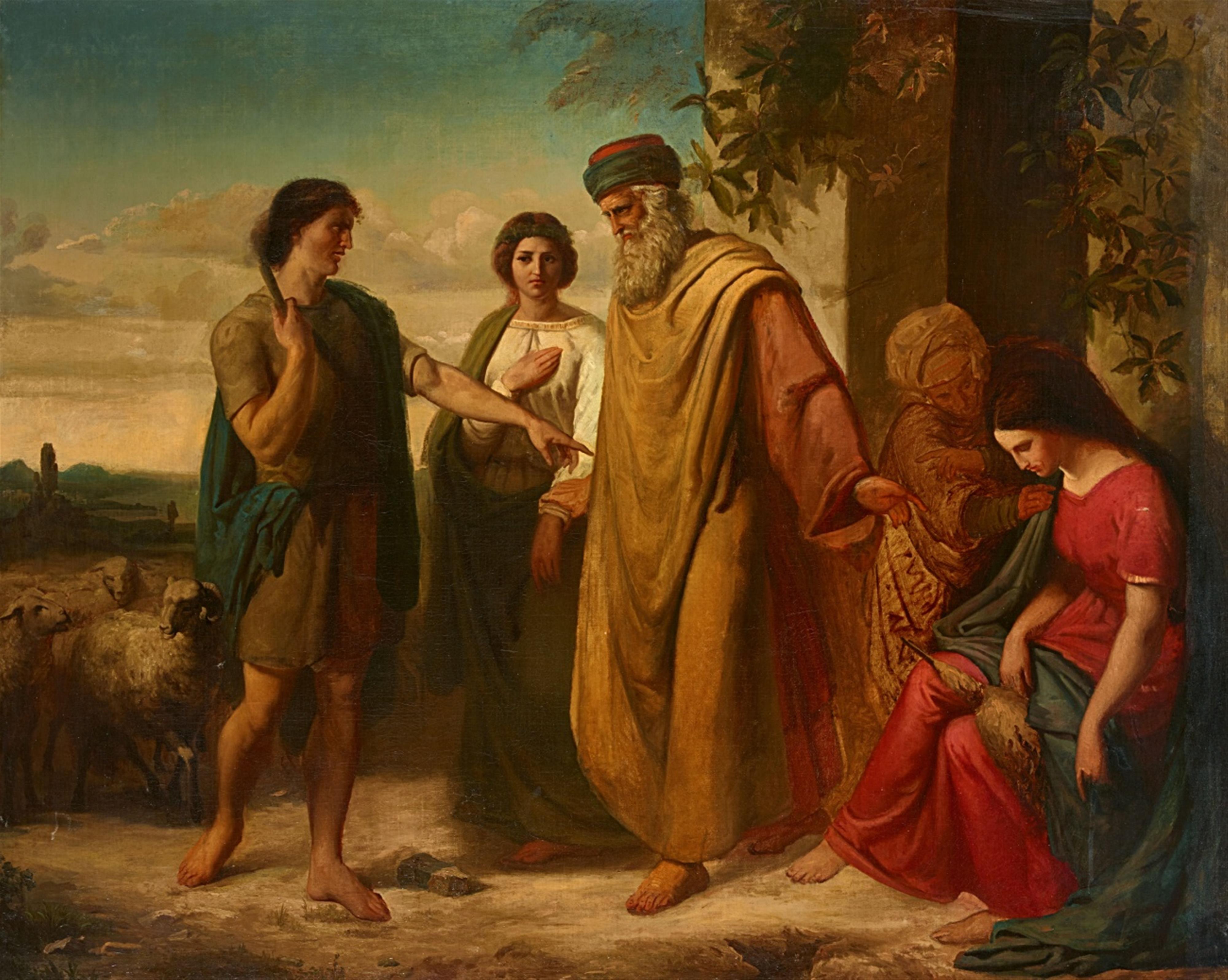Anselm Feuerbach
Jacob and Rachel
Oil on canvas. 147 x 182 cm.
The present painting is an early and large-format work by Anselm Feuerbach. In his expertise from 1953, Paul Wember dates it to the artist's period of study in Düsseldorf. In the catalogue raisonné published in 1991, Jürgen Ecker in contrast suggested a dating to the time of his first sojourn in Rome and today considers a creation in the artist's studio in Karlsruhe in around 1854, shortly before Feuerbach's first stay in Italy, to be probable.
The theme of our painting is the First Book of Moses (chapter 29). After Jacob had obtained the blessing of the first-born through his father Issac, his elder bother Esau threatened him with death and so Jacob fled to his uncle Laban von Haran. He falls in love with Laban's daughter Rachel and in order to marry her, serves Laban for seven years. At the end of this time, Laban does not give him Rachel as agreed, but according to tradition, gives him her elder sister Lea as wife. To be able to marry Rachel as well, he must serve Laban for a further seven years.
Feuerbach depicts the moment when Jacob reproaches his uncle for not having received Rachel as wife, but her sister. Rachel stands between the two main characters of the young Jacob and his uncle Laban, with Lea and her elderly servant Silpa seated on the right edge of the picture. Whilst Jacob and Rachel are depicted in front of a wide landscape vista and Lea and her servant in front of the wall of a foliage-covered house, the central figure of Laban forms a connection between these two background scenes. Feuerbach presents the five figures in a comparatively strict arrangement alongside each other, whereby the gesture of the hands is particularly compelling, illustrating the complicated network of relationships. Both Jacob (reproachful) and Laban (offering) allude to Lea, seated with her head lowered. Laban firmly grips the arm of his other daughter Rachel with his other hand whilst his other arm is held at the chest in a gesture of humility. The servant Silva signals with one hand to both opponents, Jacob and Laban, and with the other supports her mistress whose arms hang down in despair and passiveness.
Our work, still unfinished in small sections, already shows the characteristic features of Feuerbach's style of his Roman period, in particular the classically calm composition and restrained colouring. This stands Feuerbach in contrast to his contemporaries such as the Viennese academic painter Hans Makart or the Munich academy director Carl Theodor von Piloty who tended towards a more splendid and decorative painting with considerably stronger colouring. On the other hand, Feuerbach is a representative of the ideal painting of the 19th century.
We would like to thank Dr Jürgen Ecker for his renewed confirmation of the hand of Anselm Feuerbach on the basis of high-resolution photographs.
Certificate
Paul Wember, Krefeld, 05.08.1953 (printed in Ecker, ibid., p. 204f).
Literature
Jürgen Ecker: Anselm Feuerbach. Leben und Werk. Kritischer Katalog der Gemälde, Ölskizzen und Ölstudien, Munich 1991, p. 204f, no. 332.
Exhibitions
On loan to the Kaiser Wilhelm Museum in Krefeld from 1969 to 1979.

